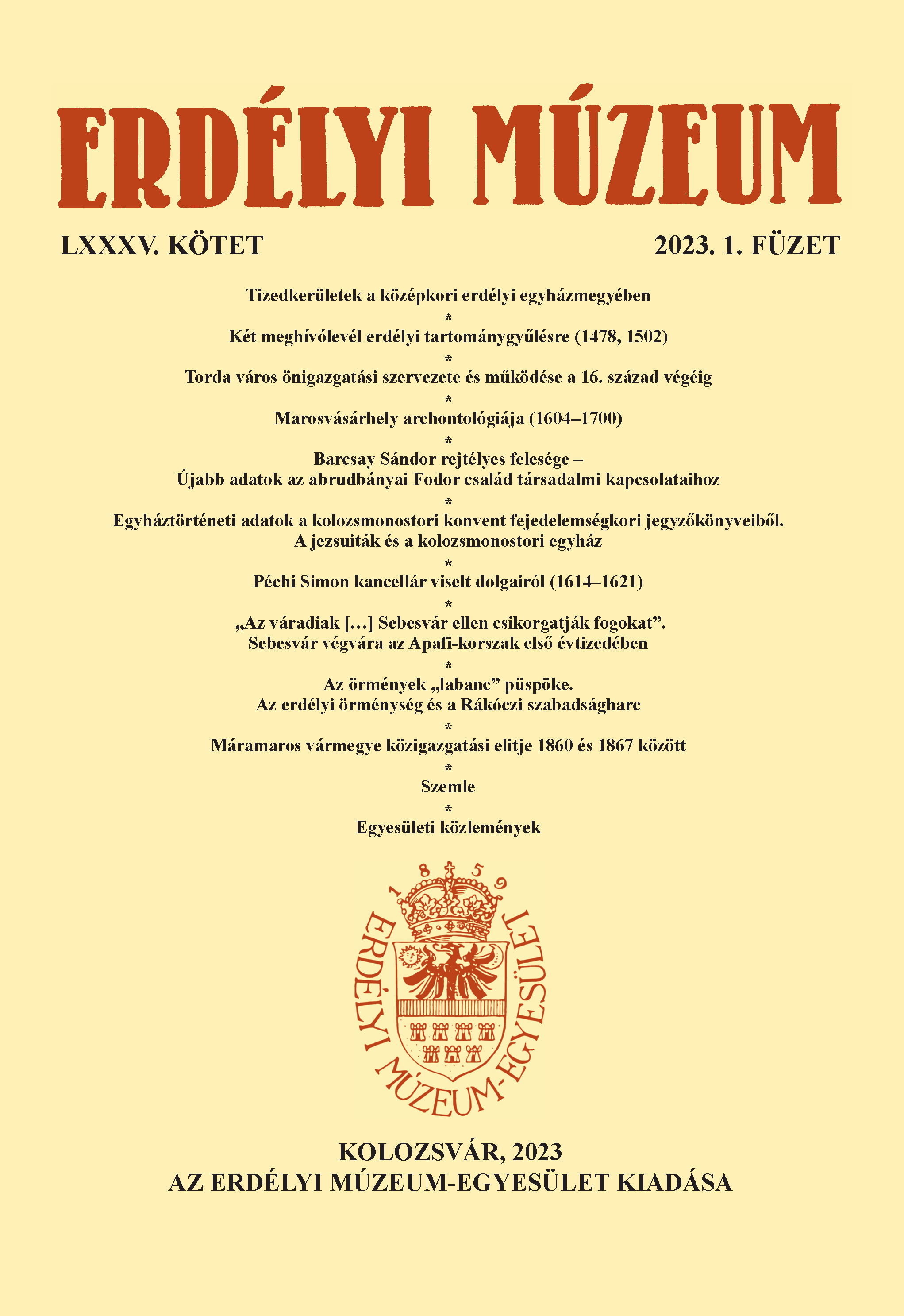Máramaros vármegye közigazgatási elitje 1860 és 1867 között
The Administrative Elite of Maramureș County between 1860 and 1867
Author(s): Zsolt SzabóSubject(s): Local History / Microhistory, Political history, Social history, 19th Century
Published by: Erdélyi Múzeum-Egyesület
Keywords: administrative elite; national identity; prosopography; continuity; corruption; ethnicity
Summary/Abstract: Due to its multiethnic composition, the study of the county elite of Maramureș can provide an interesting inquiry in the continuity/discontinuity of its elites and the modernization of county administration and the way in which nationalism shaped this process. The analysis was made through the usage of the prosopographical method and encompasses the short but tumultuous period of 1860–1867. The release of the October Diploma brought back to power the elite of 1848-49. The most influential groups were those of the protestant Hungarians and the Romanians, largely because of their involvement in the revolution. The Roman Catholic Hungarians were mainly represented by the influential Szaplonczay family. Ruthenians were underrepresented in administration. A swift change in imperial policy in 1861 would challenge the local status quo. A royal commissioner of Ruthenian origin, Péter Dolinay was tasked with the reorganization of the administration. He brought in Roman Catholic Hungarians who served during the neoabsolutist regime in neighboring counties, as well as Ruthenians from Maramureș who held smaller positions in 1860. This served his personal interests as well as those of the Viennese government and Ruthenian national movement. However, rampant levels of corruption led to his dismissal in 1863. Real change began only in 1865, when the events leading to the Ausgleich of 1867 started. The dominant groups of 1860 regained power but had to share more of it with the Ruthenians. Factors other than the political also played a role in the shaping of the elite such as: schooling, social background, familial ties and administrative experience. It can also be stated that the high ratio of functionaries who served during the revolution and the neoabsolutist period, and the presence of Romanians with hungarus identities allied to the Hungarian nobility, are characteristics specific for Maramureș.
Journal: Erdélyi Múzeum
- Issue Year: LXXXV/2023
- Issue No: 1
- Page Range: 143-154
- Page Count: 12
- Language: Hungarian

